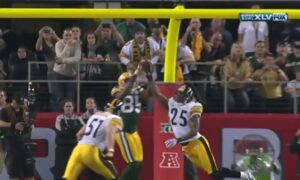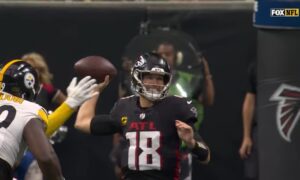By Matthew Marczi
It has been a theme for many years that, aside from the occasional special teams contributions, rookies on the Pittsburgh Steelers, including even first-round draft picks, rarely contribute during their first season. That has been especially true over the years on defense, though less so on offense.
That pattern changed somewhat in 2013 due to a variety of circumstances, both foreseen and unforeseen, as many rookies—even undrafted players—got a good chunk of playing time on both sides of the ball. Therefore, there’s more to go on than usual when speaking about how their rookie seasons went.
Player: Vince Williams
Draft Status: 6th round (206th overall)
Snaps: 405
Starts: 11
Early on following the draft, many may have been surprised if Vince Williams made the opening day roster given his scouting report as a two-down linebacker. Lawrence Timmons and Larry Foote were already entrenched starters, and the team already had ample amount of depth at the position.
Sean Spence was obviously a wildcard not to be relied upon, but the Steelers still had Stevenson Sylvester and spent the offseason stacking the depth chart with veterans at the position, including Brian Rolle and Kion Wilson, and as it turned out, inside linebacker was the deepest position during the preseason.
Early on, however, it seemed that Williams would be ahead of schedule, as he was reportedly a quick learner during the rookie camp and began instructing his fellow rookies on what to do once he himself picked it up.
Williams then proceeded to have a very good preseason showing, including on the pass rush and in coverage. His all-around game was surprising, and once Sylvester was injured and cut, it became Williams’ spot to lose.
Still, Williams found himself standing on the sidelines during the first week of the season, but that changed after Foote’s injury. While Wilson technically took over the starting spot initially, Williams still saw the bulk of the snaps in subsequent games.
In all, he started 11 of 15 games played to the tune of 405 snaps; however, the Steelers heavily utilized six defensive backs to get Williams off the field, especially as the season progressed, so as not to overburden—or rely on—the rookie signal caller.
As would be expected, Williams had his struggles early on, but he gradually got better as the season wore on, particularly against the run. In my observation, I found that he has a strong football intelligence, which allows him to quickly diagnose plays and react to them.
He also has the ability to shed the blocker that separates him from the ball carrier. This is exactly what he did to Green Bay Packers nose tackle B.J. Raji near the goal line when Williams made a stop in the backfield on Eddie Lacy.
Williams did indeed make several impressive plays during his rookie season, plays that are very encouraging signs for the future. He also had his fair share of rookie mistakes.
Most notably, he found himself in the wrong gap several times, particularly early on in the season, which helped contribute to some long runs. Adrian Peterson’s long touchdown comes to mind. When facing starting quarterbacks, in addition, he didn’t look nearly as comfortable in pass protection as he did in the preseason.
Previous Articles In This Series
Steelers 2013 Draft Class Review – LB Jarvis Jones
Steelers 2013 Draft Class Review – RB Le’Veon Bell
Steelers 2013 Draft Class Review – WR Markus Wheaton
Steelers 2013 Draft Class Review – S Shamarko Thomas
Steelers 2013 Draft Class Review – QB Landry Jones
Steelers 2013 Draft Class Review – CB Terry Hawthorne
Steelers 2013 Draft Class Review – WR Justin Brown







